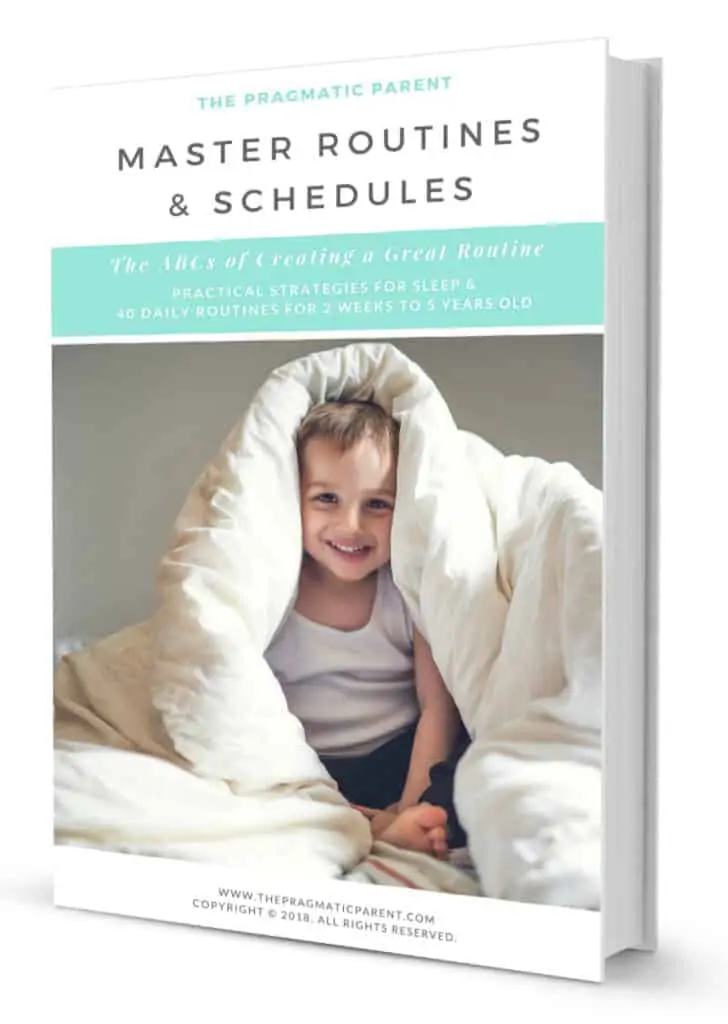If you’re a parent like me, you know the nightly challenge which is getting your kids to bed – and staying there! If you’re in search a magic pill to make bedtime easier with kids, you can’t find that here but what you will get are 9 tried-and-true methods to implement at your home and help your kids learn to go to sleep with a battle.
9 Ways to Make Bedtime Easier: Getting Kids to Sleep Without a Battle
1. Stay Consistent with Bedtime
Your little one may not be a wiz at telling time just yet, but their internal clocks know precisely what time it is. Putting your kids to bed at the same time night after night helps them naturally settle into their bedtime routine without as much of a battle
While it’s tempting to let your kids stay up late on the weekends and Summer months, consistently is always key.
The more you allow interruptions other than the occasional late night here and there, the harder bedtime will come without a consistent set time. If you. want to make bedtime easier… stick to the same time each and every night.
My eBook, Mastering Sleep & Schedules includes 40+ sample routines for baby (8 weeks old) to school-age kids and are all completely customizable to your unique family. I put every single routine I’ve ever used and sleep tips in this resource.
2. Speaking of Routine…
Having a daily routine or rather, a general rhythm to your day sets the expectation for your child when it’s time to wind down and prepare for bed.
After dinner, your typical bedtime routine night may include bath time, putting on pajamas, brushing teeth, reading a book and snuggles. A calm environment leading to bedtime, without stimulation, wrestling, screens or loud noise (try to do the dance party before dinner), helps keep bedtime peaceful and consistent.
Think of bedtime as a treasure map with one path leading to tucking your child into bed. You don’t want to have to double back downstairs when you’re already upstairs. Move bedtime in the direction of bed, not with more opportunities for distraction or playtime.
Routine cards are my kid’s favorite way to move through the day, and they’re great for me too because I don’t have to nag or yell at my kids to pick up their toys.
Download Your Routine Tracker – The Starting Place for Creating a Better Routine and Great Sleep Habits
3. Watch Nap Times
Toddlers typically nap until they’re at least three years old, and sometimes even until they begin Kindergarten. They may require 12 – 14 hours of sleep each day, but be careful not too much of this time is spent napping.
Toddlers who nap once a day can sleep anywhere from 1 to 3 hours, but if bedtime is become a trouble spot in your day, you may consider shortening it. Avoid late afternoon naps too close to bedtime. Aim for five hours from the time your child wakes until bedtime. Naps too close to bedtime make it hard for kids to fall asleep because they’re still too wired.
4. Make Sure You Set the Right Bedtime
Putting kids to bed overtired results in bedtime battles and tucking Junior into bed while he’s still wired, usually means you’ll be back in his room a minimum of 5 times for the next hour.
Finding the right bedtime for age and recommended number of sleep hours is key. This helpful sleep chart will give you a good idea of bedtime based on age, naps and recommended number of sleep and awake time each day.
5. Turn Off Electronics
While it’s tempting to kill the last hour before bedtime with a TV show or tablet time, try to avoid exposure to screens before sleep.
Electronic devices don’t help kids relax, in fact, watching and playing games or shows with violence, high-energy, suspense or drama stoke the fires inside a child and can make it hard for them to calm down, or can create night time fears and middle of the night waking.
Additionally, lights emanating from screens can interfere with sleep, making the body think it’s daytime, not nighttime. Seek out quiet and calm activities before bedtime such as reading, putting together a puzzle, drawing or having a chat.
Electronics in the bedroom should also be off-limits. Hand-held lights make it difficult for the body to make the sleep hormone, melatonin so your child falls to sleep and beeping from alerts or incoming texts can keep your child up all night long.
Unplug and leave all devices in an area of your home overnight.
6. No Caffeine or Pre-Bed Stimulants
I’m sure you don’t let your child drink coffee before bed, but caffeine can be found in a lot of options you may not think about. Regular soda, teas, chocolate and some nuts are all sources of caffeine.
Kids don’t need caffeine, so try your best to keep it out of their diets all day long but if he does have some, aim for early in the day and not around nap or bedtime.
7. Make Time for Daily Exercise
Getting enough daily activity helps your child from having bottled up energy at night. Getting a daily dose of physical activity will help your child sleep better and deeper. You can incorporate healthy habits in your day like taking the dogs for a walk, playing in the backyard, trying out a new park for 30 minutes, taking a family bike ride or a dance party hours before it’s time for bed.
8. Use a Bedtime Chart
For little kids, using a bedtime chart with visual cues tells them what the steps to bedtime are. As they work their way through the bedtime routine, they can see what is next. This also helps to curb bedtime requests such as one more book or jumping on the bed…. because it’s not on the schedule for the night.
9. Design Your Child’s Bedroom for Sleep
Make your child’s bedroom a comfortable and welcoming environment for sleep. A darkened room blocks out light in the summer months or early morning light in the winter. A nightlight can be OK so long as it’s not excessively bright or has a ceiling projector and keeps your child awake.
Set the temperature to cool and don’t overload blankets. Hot environments and overheating can lead to listlessness and night waking.
Children who don’t get enough sleep have a harder time making it through the day without tantrums and are more prone to sleep problems. Irritable littles ones aren’t anyone’s favorite kind of kid but lack of sleep also affects behavior, being able to pay attention, focus and learn at school, and controlling their emotions. Sometimes bedtime may be a challenge, but patience, consistency and a daily routine are important to creating better sleep habits and getting your child the sleep he needs.
Need a little extra help starting or adjusting your daily routine? Here’s a FREE Course that will help you take control & bring more peace to your home.
Additional Parenting Tools to Help with Sleep & Routines:

Learn how to start creating a routine, establishing wake up and bedtimes, strategies for working through nap transitions, prepping for daylight savings time to keep your routine on track and logging your baby’s sleep patterns… all helping you rock a routine and simplify life when your days flow.
Surviving Your Child’s Sleep Regressions Ebook
Additional Information on This Topic
- Expert Tips to Surviving the 8 Month Sleep Regression
- Signs It’s Time to Move to One Nap a Day: How to Master the Nap Transition
- Scared of the Dark: How to Conquer Nighttime Fears
- Making the Transition to a Big Kid Bed
- How to Ease Separation Anxiety in Babies, Toddlers & Preschoolers
- 8 Common Toddler Sleep Problems & How to Handle Them
- 7 Ways to Beat Bedtime Stalling with Young Kids
- Is Your Kid Waking Up Too Early? How to Fix It
- 10 Helpful Ways to Calm the Kid Who Fights Bedtime
- Toddler Sleep Regressions: What You Need to Know About Your Two Year Old’s Sleep
- How to Establish a Peaceful Bedtime Routine for Your Baby
- How to Survive the 18 Month Sleep Regression & 2 Year Sleep Regressions
- Comprehensive Sleep Charts & Sleep Guidelines for Infants Through Adolescents
- The Benefits of Having a Daily Routine
- Create an Awesome Routine for Better Sleep Habits
Want even more?
Shop All Parenting Resources
Shop all of our parenting resources from self-regulation tools and managing big emotions to building self esteem and confidence. There are resources for all seasons of life!









Awesome tips! I definitely agree that kids love routines (naturally).